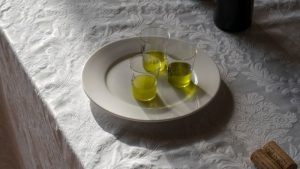At Messermacher, knife-making is an art

Unlock the Editor’s Digest for free
Roula Khalaf, Editor of the FT, selects her favourite stories in this weekly newsletter.
Around 100m from the house where Mozart was born, among the winding streets and coloured façades of Salzburg’s medieval city centre, there’s a shop dedicated to a lesser-known part of Austrian heritage. A plaque in the shop window informs passersby: “In central Europe a knife was considered an heirloom, a treasure to be passed down from generation to generation. By creating knives worthy of being cherished, I hope to revive this tradition.”

Messermacher was founded by Richard Kappeller 21 years ago with the idea of returning some of the prestige to the ancient Austrian tradition of knife-making: one of the earliest known pocket knives, dating to around 600-500 BC, was discovered at Hallstatt near Salzburg, while the Trattenbach pocket knife has been hand-produced in Upper Austria for centuries and is today a symbol of the region. While Kappeller still makes hunting knives for the Austrian nobility, as befits the knife’s tradition, kitchen knives are now the biggest single seller.


Almost all of the 500 knives in the sleek, glass-fronted shop have been made by Kappeller and his craftspeople at a nearby workshop, and every one is subtly different. The large chef’s knife (from €700-€2,185, depending on the handle material and blade metal) is designed as a universal tool for fish, meat and vegetables. The Jagdknicker Klassik (from €570-€6,650) is the hunter and hiker’s companion, designed for gutting, but also slicing. Each blade is honed by hand, while the tempering is done with a digitally controlled hardening furnace. Kappeller’s own favourite kitchen knife is the Santoku (from €450), which is inspired by Japanese knives; one recent iteration was produced with Damascus steel and 2,000-year-old stabilised bog oak which has been treated with resin.

A particularly dazzling (and expensive) knife was made to celebrate the store’s recent 20-year anniversary. “The steel is made from one piece and I made the handle from a stabilised fossil mammoth bone,” he says (the bone can be ethically sourced because it’s from an extinct species and therefore no longer endangered). In the centre of the handle is a pear-cut 1.64-carat diamond set in rose gold, and toward the butt is an inlay featuring 270 additional diamonds. Kappeller went to Antwerp to learn how to set the stones. It is priced at €55,000.


For visitors inspired to try their own hand, Messermacher also offers a two- or three-day workshop where clients start by drawing, then choosing their materials before cutting, polishing and sharpening the blade and turning the handle. You can make a kitchen knife such as the Cuisine, using hand-forged Damascus steel, or an outdoor hunting knife, which may be customised with an engraving.

For all of the elaborate designs on offer, Kappeller’s passion remains quite simple. “I have been interested in knives since my childhood,” he says. “We had a garden where my grandparents grew vegetables and fruit trees, and there was always something to carve, saw off and chop. When the tools were sharp, every step of the work was much easier. That fascinated me.”
Messermacher, Getreidegasse 25, 5020 Salzburg; messermacher.at
#Messermacher #knifemaking #art







